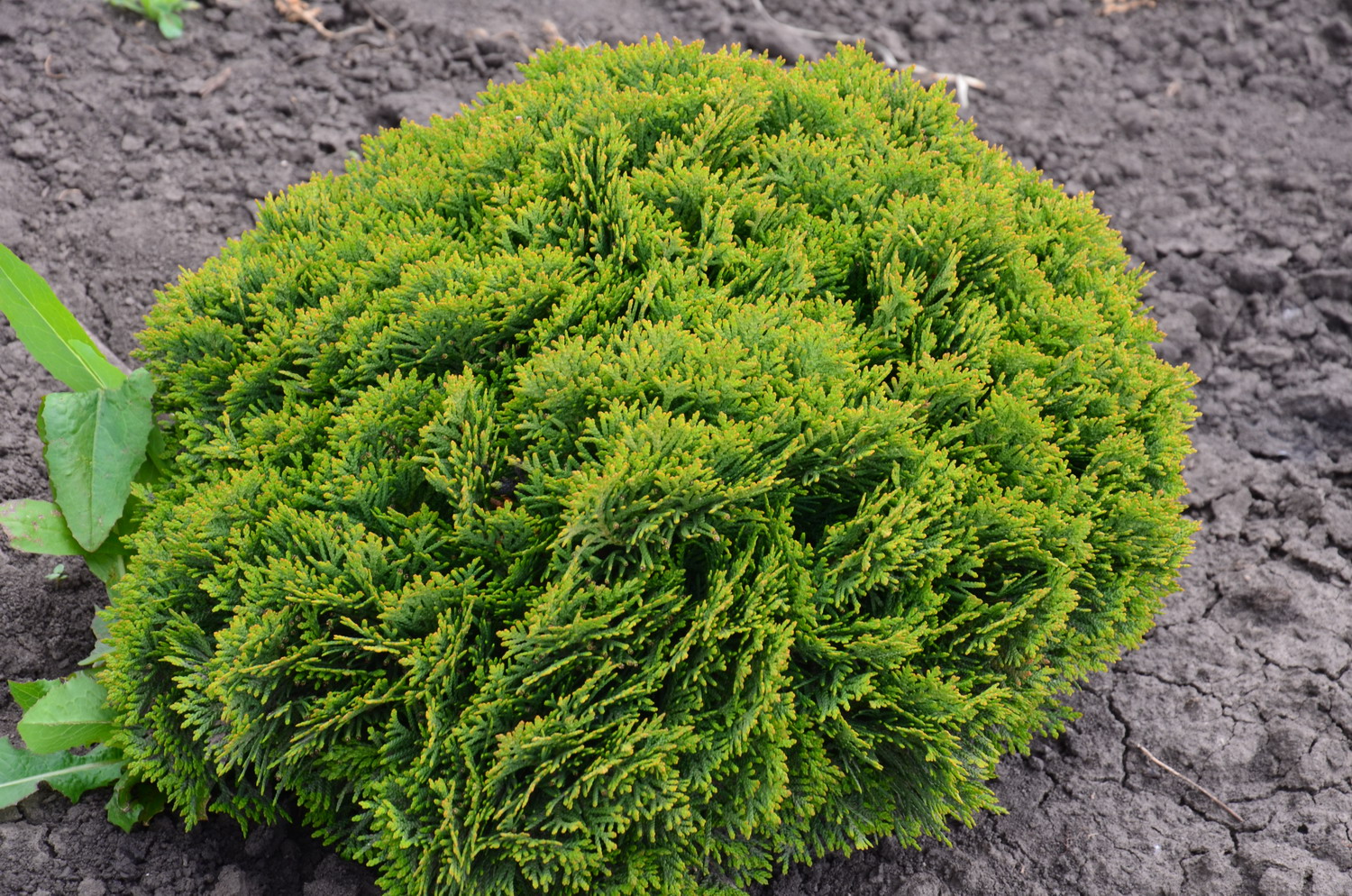
Tuia Globosa nana occidentală globulară. Thuja occidentalis Globosa nana PLANTE.md
Description American arborvitae is a woody, needled evergreen tree in the cypress family (Cupressaceae) that is native to eastern and central Canada and the eastern and north-central portions of the United States. The species epithet, occidentalis, means from the Western world.
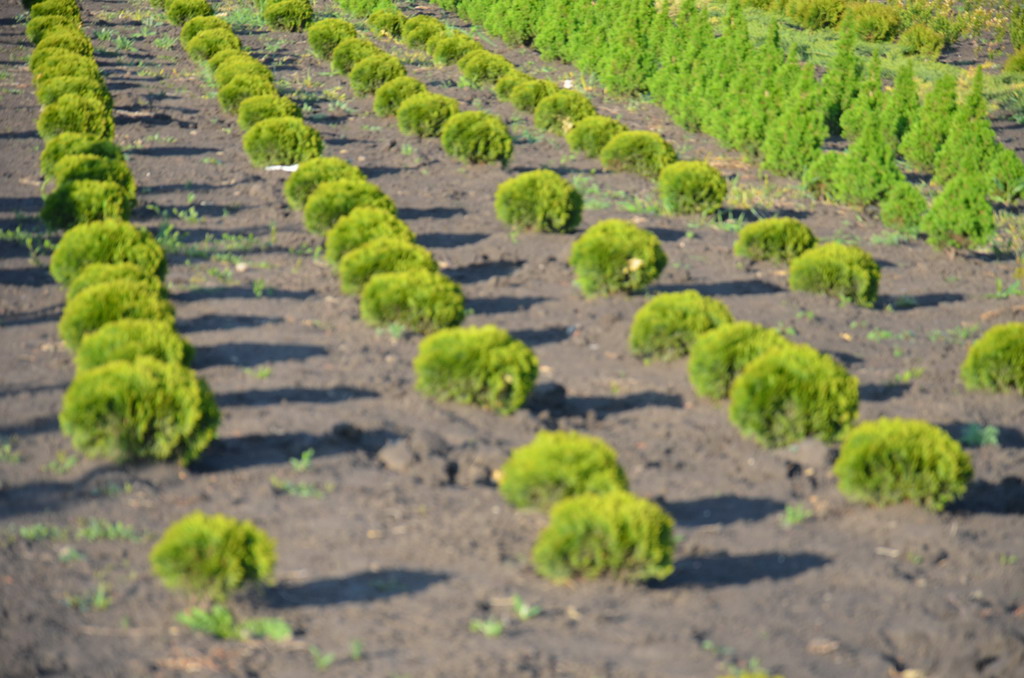
Tuia Globosa nana occidentală globulară. Thuja occidentalis Globosa nana PLANTE.md
Thuja orientalis 'Aurea Nana' Pronunciation: THOO-yuh or-ee-en-TAY-liss AW-ree-uh NAN-uh SKU #07290 6-9 Your climate might be too cold for this plant: Change Location Find In Store OVERVIEW DETAILS STYLE CARE Care Provide enriched, well-drained soil.

Thuja occidentalis 'Globosa Nana', Lebensbaum 'Globosa Nana' Baumschule Ley
Has 99 Synonyms KB Homotypic Synonyms Thuja procera Salisb. in Prodr. Stirp. Chap. Allerton: 398 (1796), nom. superfl. Thuja theophrasti Nieuwl. in Amer. Midl. Naturalist 2: 284 (1912), nom. superfl. Heterotypic Synonyms Chamaecyparis boursieri Carrière in Traité Gén. Conif., ed. 2: 125 (1867), nom. illeg.

Buy thuja western Globoza Aurea in Kiev. Thuja occidentalis Globosa Aurea seedlings in the
Thuja occidentalis, commonly known as Eastern Arborvitae or Northern White Cedar, is an evergreen conifer well-known for its dense, conical shape and lush green foliage. Native: Thuja occidentalis is native to North America. It is predominantly found in the northeastern United States and southeastern Canada. This species naturally occurs in wet.
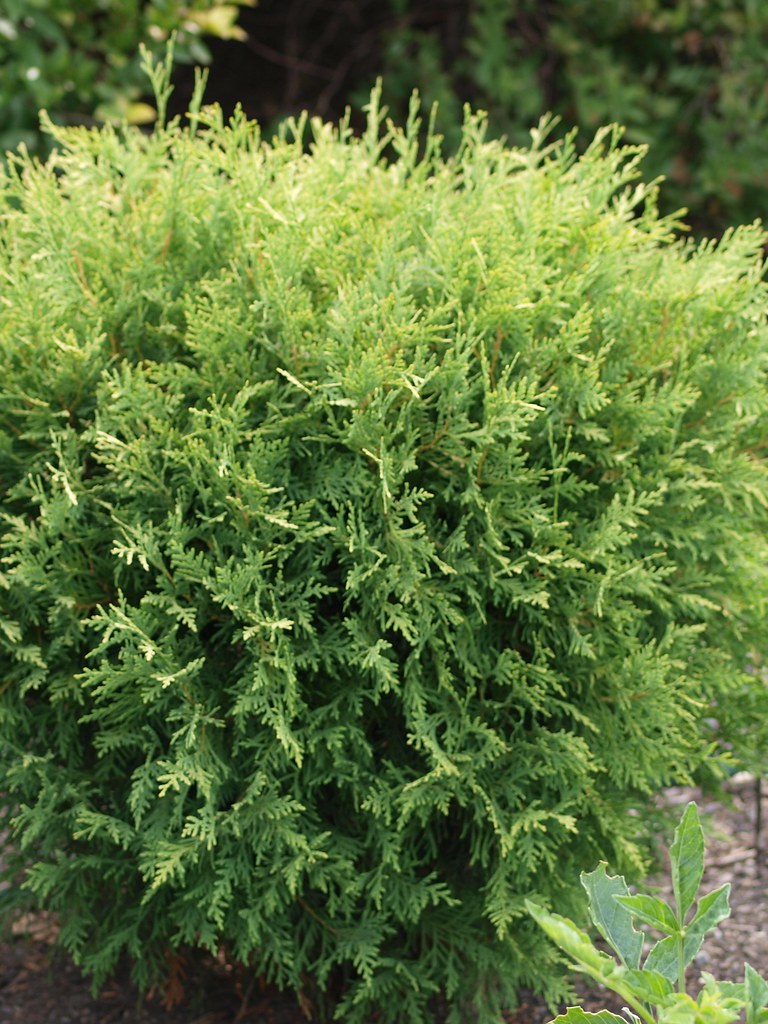
Golden Globe Arborvitae Thuja occidentalis Aurea 'Nana', G… Flickr
Find help & information on Thuja occidentalis &s;Globosa Compacta Nana&s; from the RHS
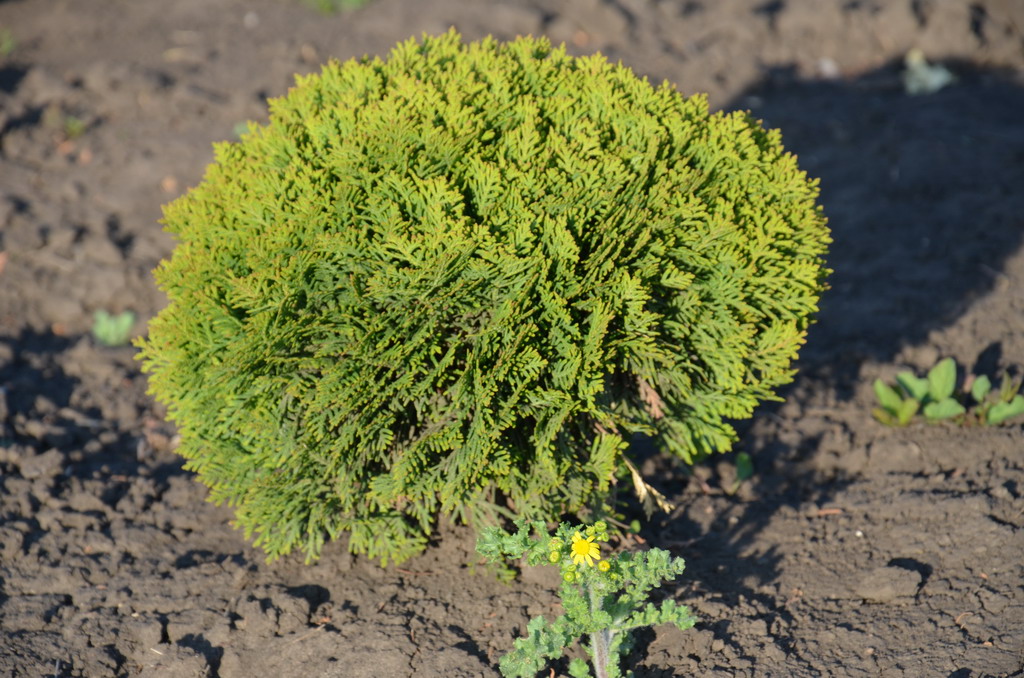
Tuia Globosa nana occidentală globulară. Thuja occidentalis Globosa nana PLANTE.md
An evergreen tree, 50 to 60 ft high, with a trunk 2 to 3 ft in diameter; in cultivation a pyramidal shrub or tree rarely more than half as high; branches usually upturned towards the end; branchlets three or four times pinnate, the ultimate subdivisions much flattened, 1 ⁄ 16 to 1 ⁄ 12 in. wide. Leaves scale-like, about 1 ⁄ 12 in. long, the late.
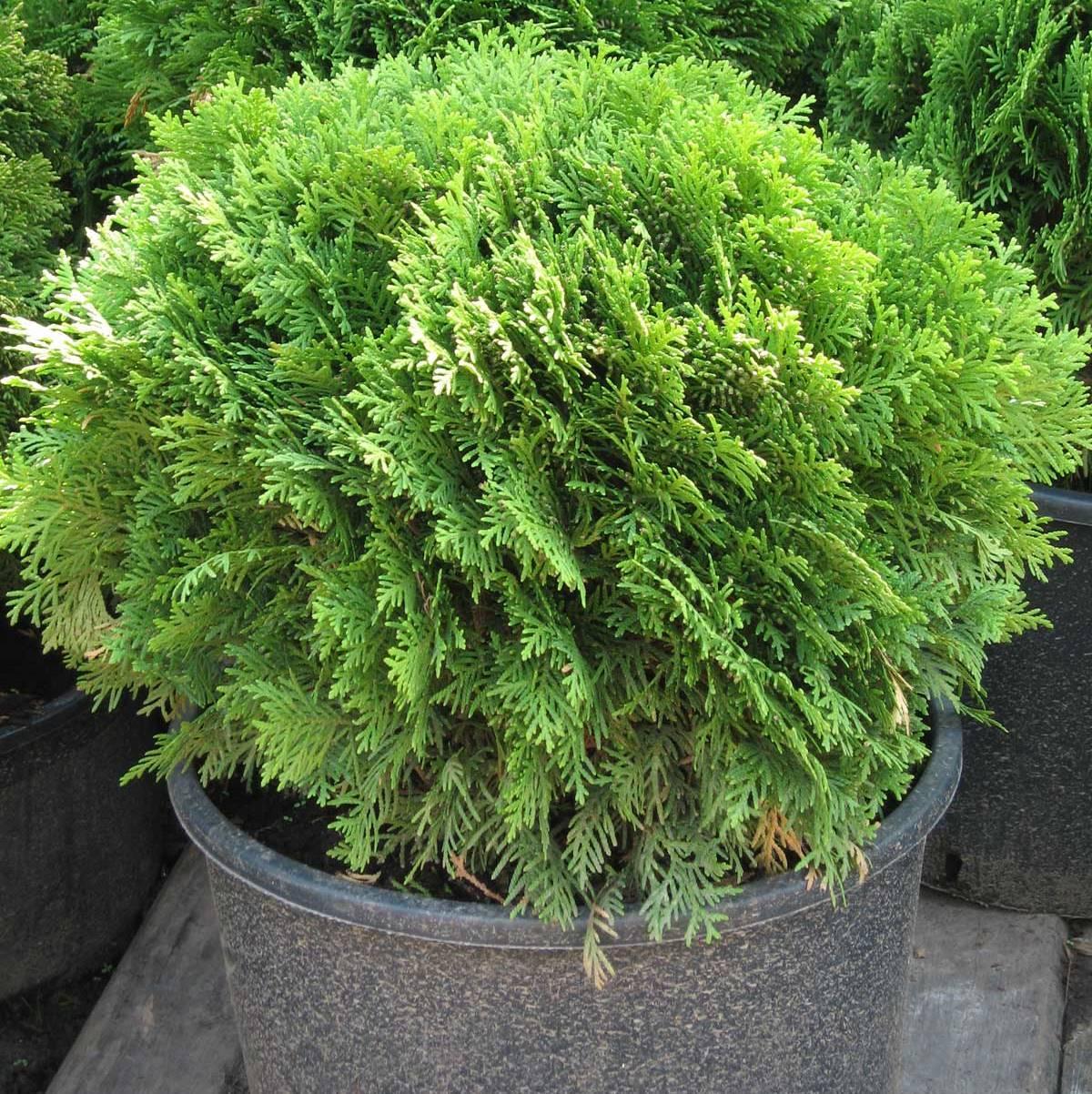
Купить Туя западная Глобоза Компакта (Thuja occidentalis Globosa Compacta) от интернетмагазина
To grow from seed, place 5-6 cones in a paper bag and put the bag in a sunny location so that the cones can dry. Once the cones are fully dry, shake the bag to remove the seeds. Plant the seeds on a seed moss tray and cover it with a glass lid. Place the tray in a sunny location.

Thuja occidentalis "Globosa" Tuja
The most common species, Thuja occidentalis (Eastern Arborvitae), is native to northeastern America, while Thuja plicata (Western Red Cedar) is indigenous to the Pacific Northwest. Thuja orientalis (Oriental Arborvitae), as the name suggests, originates from Asia.

Cryptomeria japonica Globosa Nana PB6.5 (15/25)
General Information. Trees to 15 (-38) m tall; trunk 0.9 (-1.8) m d.b.h.; bark reddish brown or grayish brown, fibrous, fissured; crown conical. Leaves on both sides of branchlets dull yellowish-green; facial leaves (1.5-)3-5 mm, abaxial gland conspicuous, apex acute; lateral leaves slightly shorter than or as long as facial leaves, apex incurved.
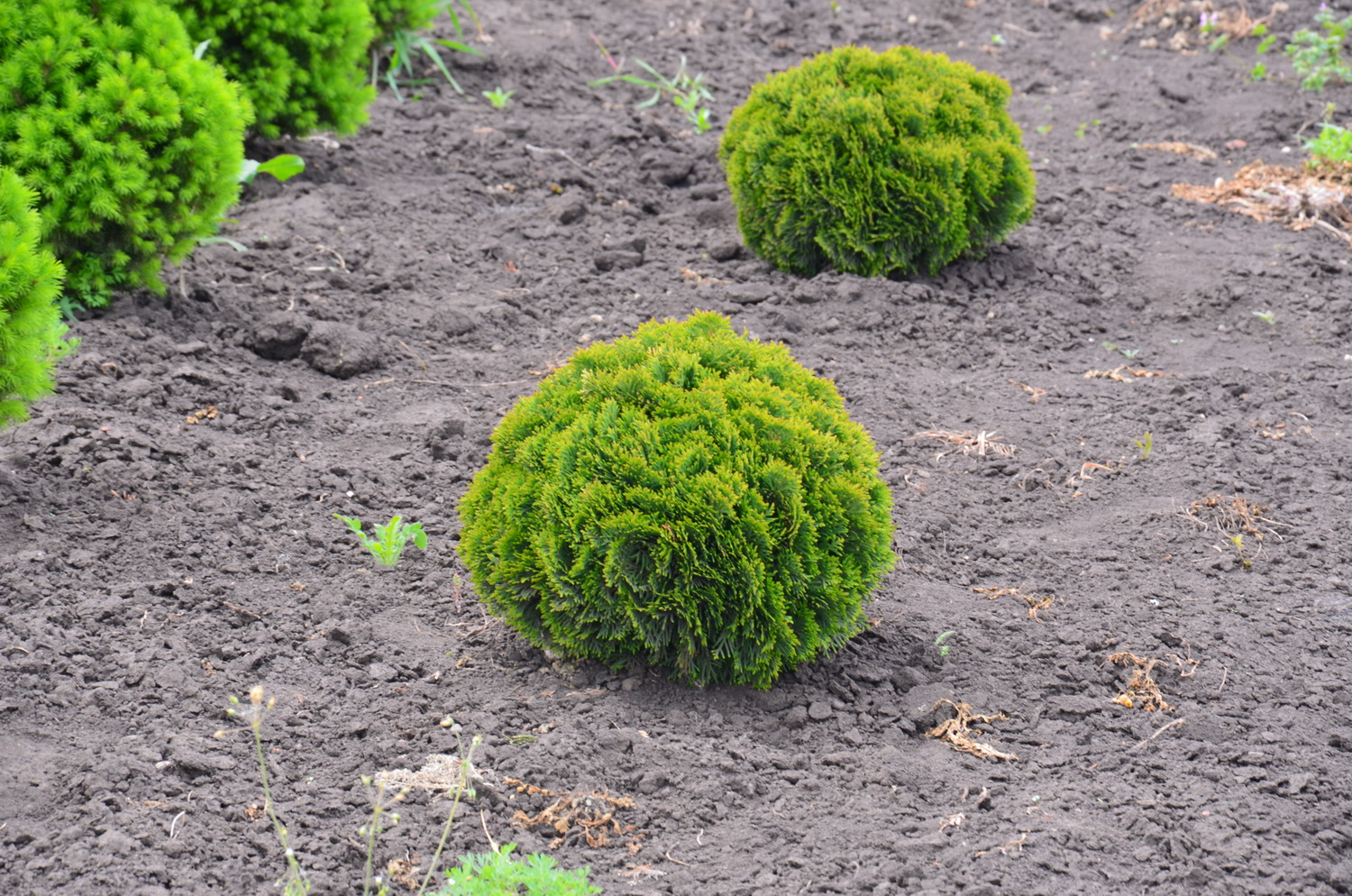
Tuia Globosa nana occidentală globulară. Thuja occidentalis Globosa nana PLANTE.md
Plant Type and Habit: It is an evergreen conifer with a dwarf, rounded growth habit. This cultivar is known for its slow-growing nature and dense foliage. Size: 'Nana Aurea' is a small cultivar, typically reaching about 2-5 feet in height (60-150 cm) and 2-4 feet in width (60-120 cm). Its diminutive size makes it ideal for small gardens and.

Thuja occidentalis 'Globosa' Thuja occidentalis, Plants, Plant needs
Thuja occidentalis 'Globosa Aurea' is a delightful, low-growing evergreen shrub, perfect for adding a touch of bright color to the landscape. Its adaptability and easy-care nature make it a popular choice for various garden styles and purposes. Thuja occidentalis 'Globosa Aurea': An In-depth Look

Thuja occidentalis 'Nana' dwarf American arborvitae The Dawes Arboretum
Thuja Type: Conifer Native to (or naturalized in) Oregon: No Conifer, evergreen tree/shrub, to 40 ft (12 m) high, broad pyramidal, branches erect and out spreading, densely crowded. Bark reddish brown, fissured into narrow ridges covered with elongated scales.

Thuja occidentalis “Globosa” (Tuja “Globosa”) Rasadnik Fuderer
Thuja occidentalis Common names: Eastern arborvitae, Northern white cedar, Eastern white cedar, American arborvitae All pictures (4) Share Overview More Information Care Knowledge Cultivars Photo Gallery (4) Thuja occidentalis (Eastern Arborvitae), habit, winter; © Edward A Hedborn, Jr

Zerav západní Thuja occidentalis Globosa, rostlina
Platycladus orientalis, commonly called oriental thuja or oriental arborvitae, typically grows as a dense, conical to columnar tree to 18-25' tall. Also grows as a large shrub. Plants tend to open up with age. Scale-like yellowish-green leaves in flattened sprays in youth, becoming darker green with age. Foliage may bronze up in winter.

Plant Gallery Encyklopedia Roślin Thuja occidentalis 'Globosa' Żywotnik zachodni 'Globosa'
Noteworthy Characteristics. Thuja occidentalis, commonly known as American arborvitae, Eastern arborvitae, Eastern white cedar or Northern white cedar, is a dense, conical to narrow-pyramidal (sometimes maturing to broad-pyramidal), often single-trunked, evergreen tree that is native to eastern and central Canada south to northern Illinois, Ohio and New York with scattered populations further.

Globe Cedar (Thuja Occidentalis 'Little Giant') Davenport Garden Centre
Varieties of Thuja Trees. A. Thuja Green Giant. An exceptionally robust and fast-growing variety, the Thuja Green Giant can grow up to 3-5 feet per year, reaching an impressive mature height of 50-60 feet. Its rich green foliage is dense and scale-like, making it a top choice for privacy screens. However, due to its immense size, it requires.